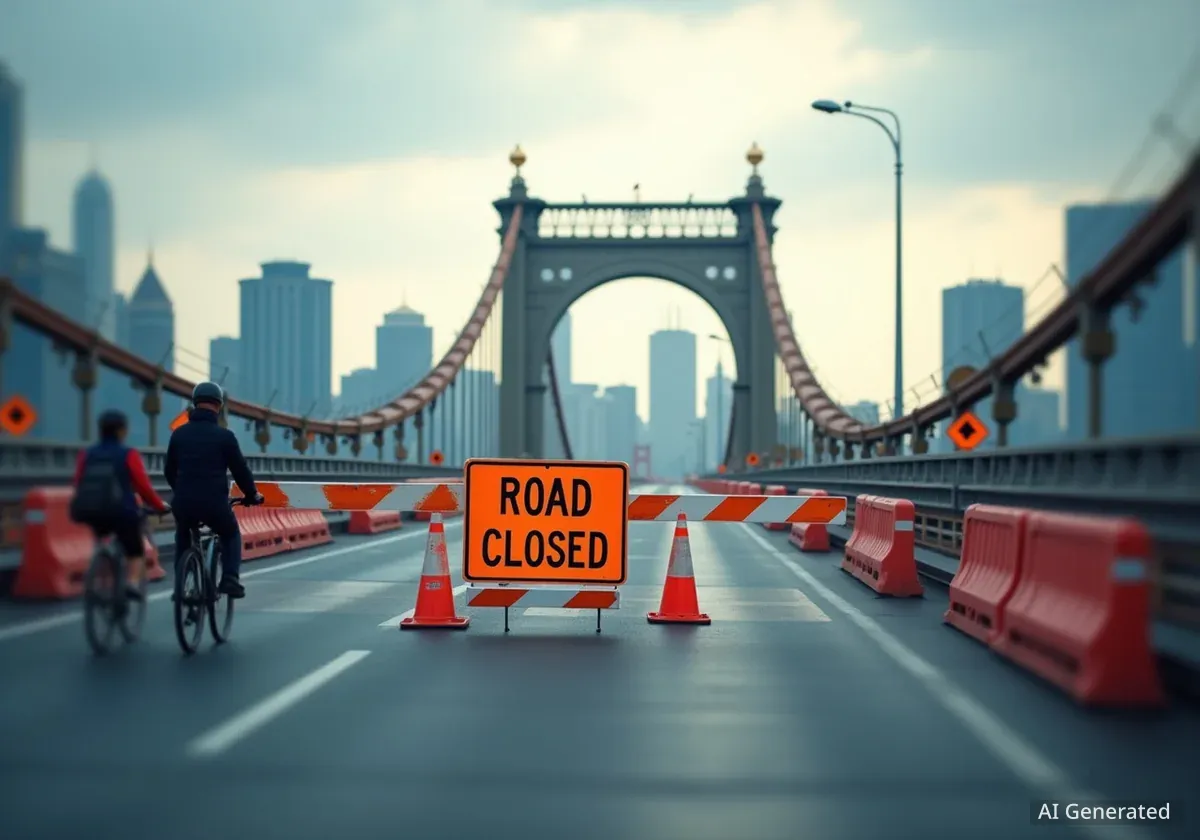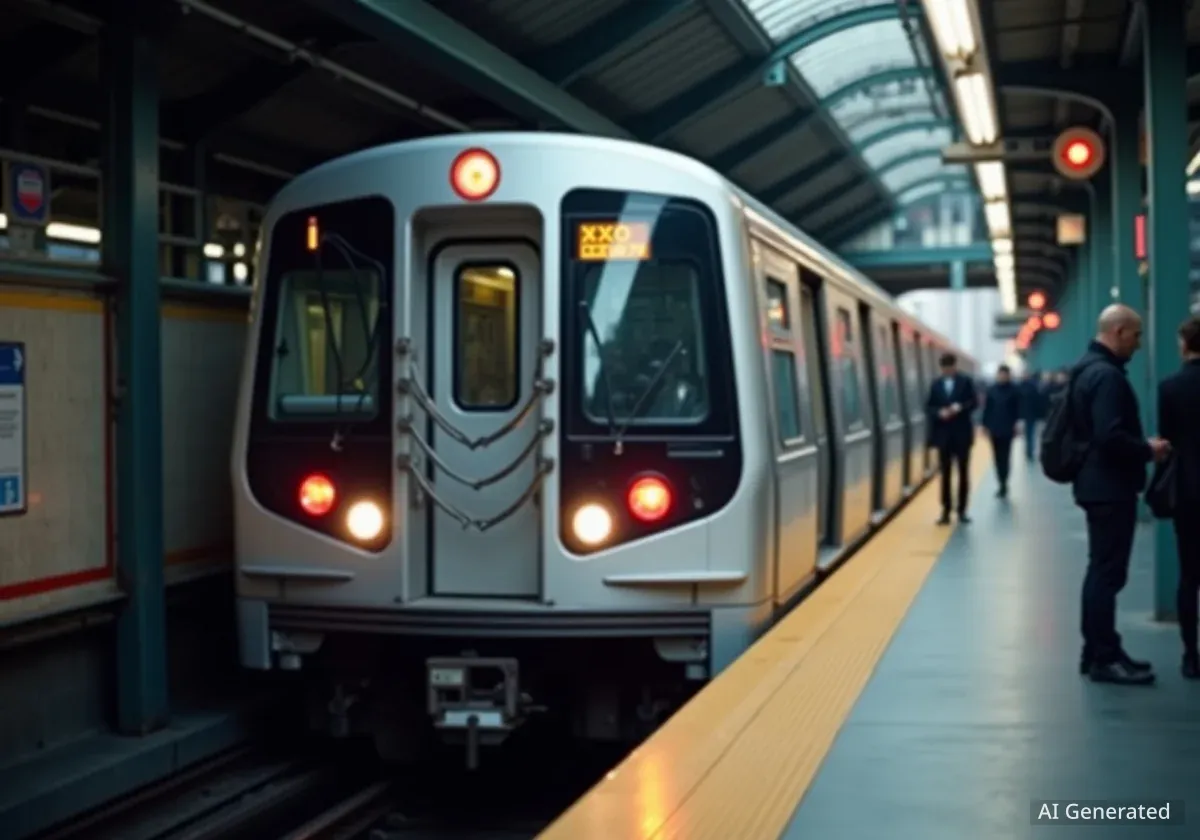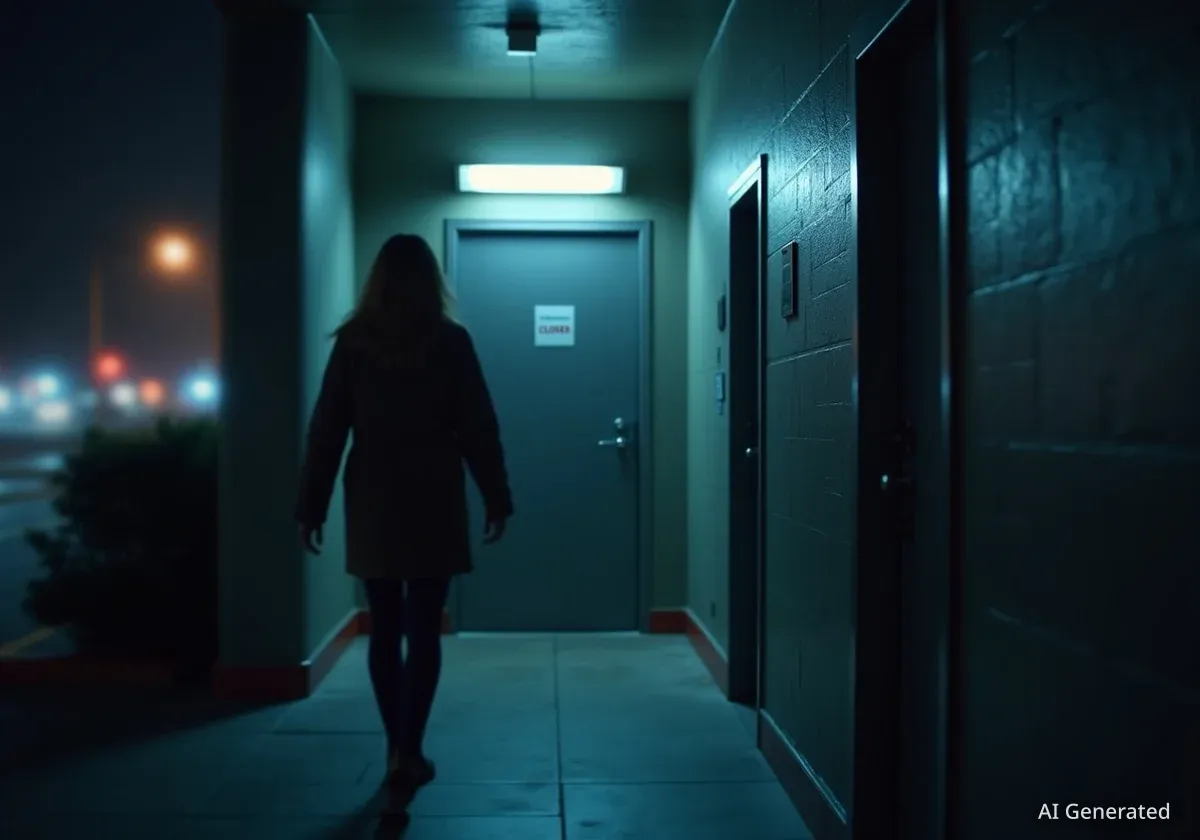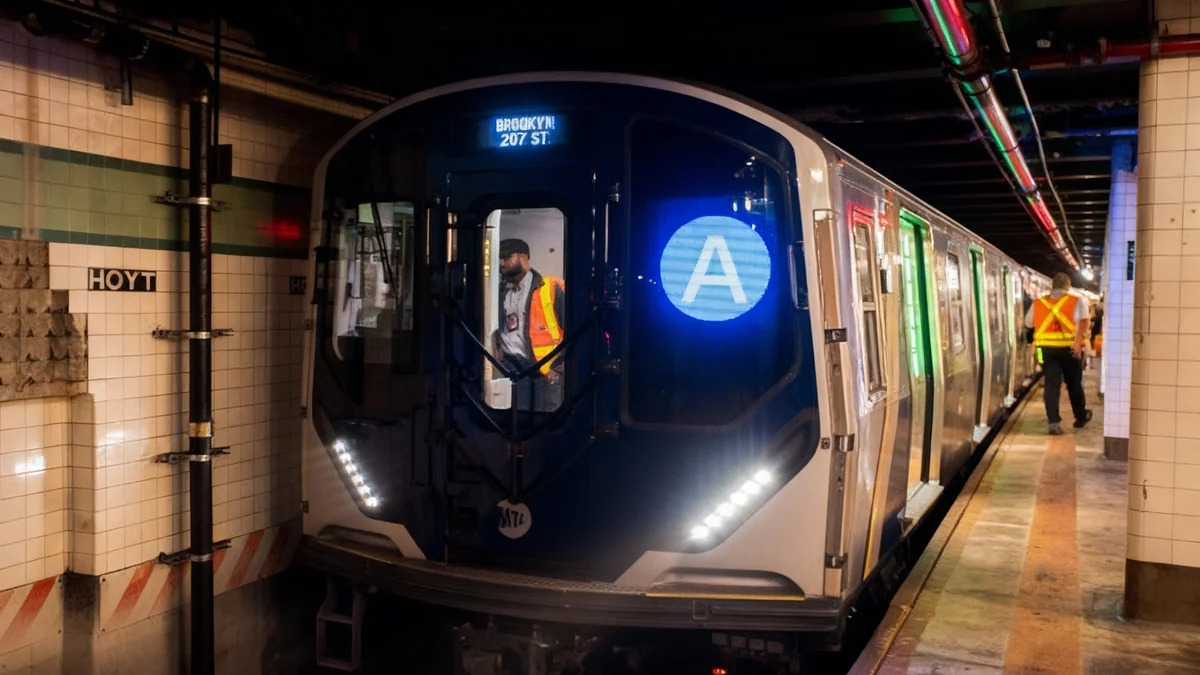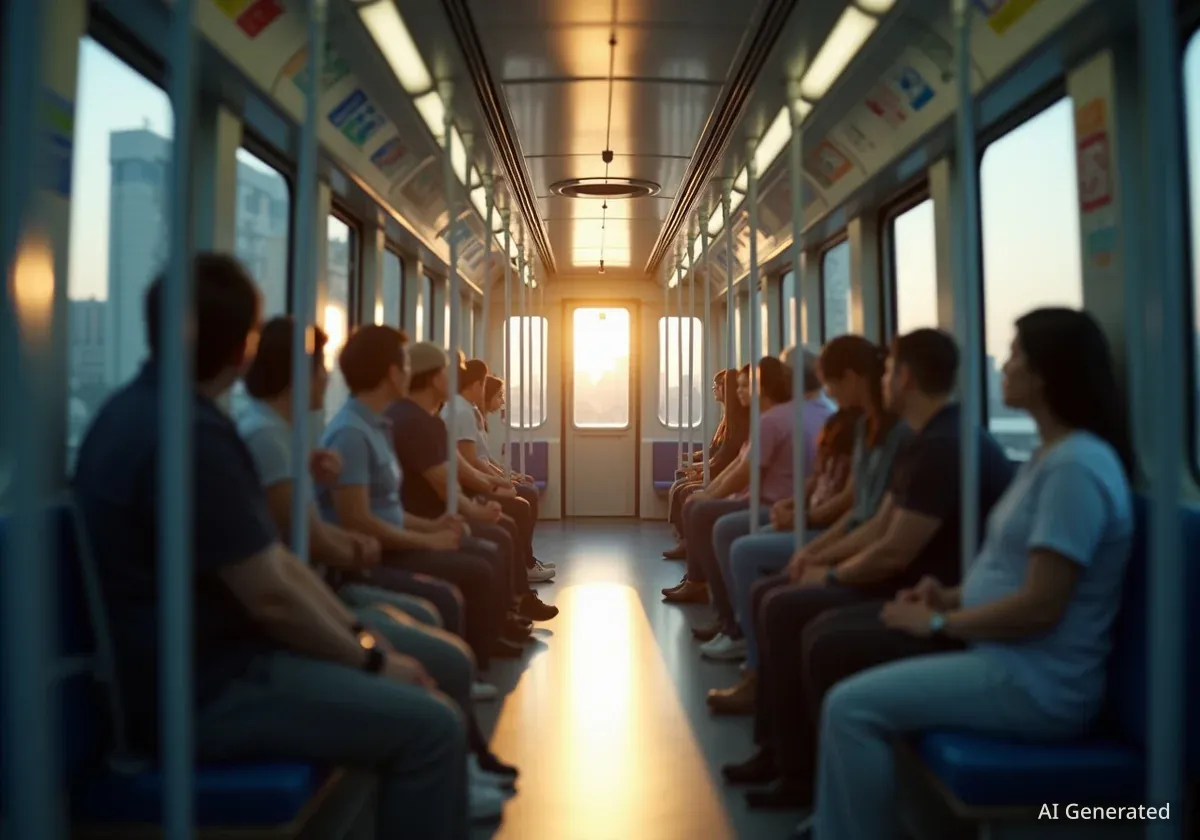Portland's historic Broadway Bridge will close for approximately six months starting Monday, October 13, for critical deck repairs. This closure will redirect all traffic, including vehicles, buses, and streetcars, impacting thousands of daily commuters between the Pearl District and the Rose Quarter. Pedestrians and cyclists will still have access to one sidewalk.
Key Takeaways
- Broadway Bridge closed from October 13 to April for repairs.
- All vehicle traffic, buses, and streetcars will be rerouted.
- Pedestrians and cyclists can use the south sidewalk.
- Project cost is $9.3 million, with 90% federal funding.
- Commuters should plan for significant delays and alternative routes.
Broadway Bridge Repairs Begin
The Broadway Bridge, a vital link across the Willamette River, requires extensive repairs to its failing deck. Multnomah County officials confirm that water accumulation in the bridge's moving components has led to significant deterioration. The necessary work involves replacing the existing deck with new steel sections, a process that will be completed in stages.
The bridge, originally constructed in 1913, connects the city's Pearl District on the west side with the Rose Quarter on the east. Its closure marks a major disruption for Portland's transportation network. Crews will work on one section at a time to ensure the structural integrity of the bridge throughout the repair period.
Bridge Facts
- Built: 1913
- Connects: Pearl District (west) and Rose Quarter (east)
- Repair Cost: $9.3 million
- Federal Funding: 90% ($8.37 million)
- County Funding: 10% ($0.93 million)
Impact on Commuters and Public Transit
The six-month closure will affect various modes of transportation. Drivers, bus riders, and streetcar passengers will need to adjust their daily routes. These reroutes will, in some instances, add miles to commutes and increase travel times.
TriMet's bus line 17, which typically uses the Broadway Bridge, will be rerouted across the Steel Bridge. This change is expected to minimize delays for bus passengers compared to other public transit options.
Streetcar Service Changes
Portland Streetcar riders will experience more substantial impacts. The streetcar network's A Line stop at Northwest 9th and Lovejoy will be completely closed during the repair period. Furthermore, streetcars will only cross the Willamette River via Tillicum Crossing, located further south through the Central Eastside. This rerouting means streetcars will turn back around at each end of the Broadway Bridge, leading to extended travel times.
"Oh, wow…I don’t drive, so…Walking more, biking more, taking other public transportation," said Elias Ledezma, a daily streetcar user who relies on the service for his commute to work.
Andrew Plambeck, a representative for Portland Streetcar, advises riders to consider alternative transportation methods, such as buses, for river crossings. He also recommends that streetcar users plan for significantly longer journeys if they choose to continue using the service.
Historical Context
The Broadway Bridge is one of Portland's oldest and most iconic drawbridges. Its design allows large vessels to pass through the Willamette River. Regular maintenance and periodic repairs are essential to keep such a historic piece of infrastructure operational and safe for modern traffic demands. This current repair project aims to extend the bridge's lifespan and ensure its reliability for decades to come.
Options for Pedestrians and Cyclists
Unlike vehicle and streetcar traffic, pedestrians and cyclists will retain access to the bridge. The south sidewalk of the Broadway Bridge will remain open throughout the entire repair period. This provision allows walkers and bikers to continue their commutes or recreational crossings without needing to find an alternative river route.
"I go across it all the time. I jog," commented Mark Birtchfield. "I think the bridge is awesome."
This maintained access offers a crucial alternative for those who travel by foot or bicycle, mitigating some of the disruption caused by the comprehensive deck replacement.
Funding and Project Details
The total cost for the Broadway Bridge deck replacement project is estimated at $9.3 million. The majority of this funding, 90%, will be covered by federal allocations. Multnomah County will be responsible for the remaining 10% of the project costs. This funding structure highlights the importance of federal support for critical infrastructure projects at the local level.
The project is scheduled to conclude by April, with all traffic expected to return to normal in the spring. Commuters are encouraged to seek updated information on temporary route options and project progress through official county and transit websites.
Project Timeline
- Start Date: Monday, October 13
- End Date: April (approximately 6 months)
- Expected Completion: Spring
Planning Your Commute
Commuters should prepare for changes to their travel routines. Planning ahead will be essential to manage the increased travel times and rerouted services. Utilizing online maps and public transit apps that provide real-time updates can help navigate the altered routes effectively.
For those who normally drive, exploring carpooling options or considering public transit for the first time might be beneficial. Bicycle commuters can take advantage of the open sidewalk, but should be aware of potentially increased pedestrian traffic.
The closure presents a temporary challenge for Portland residents, but the long-term benefits of a repaired and safe Broadway Bridge are significant for the city's infrastructure and future mobility.

